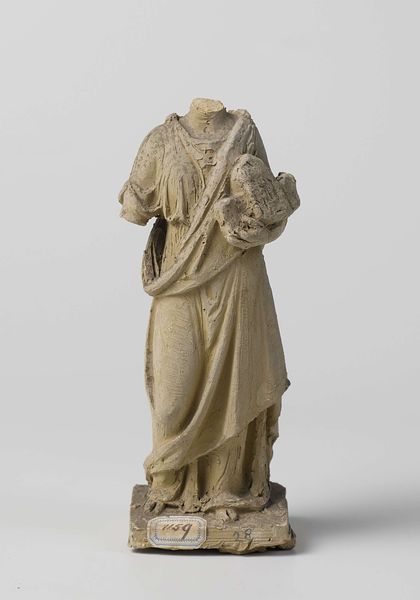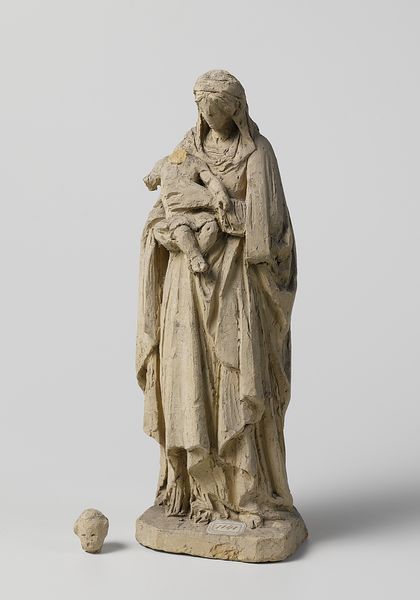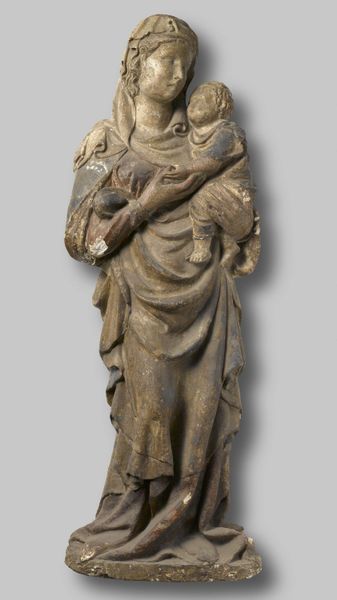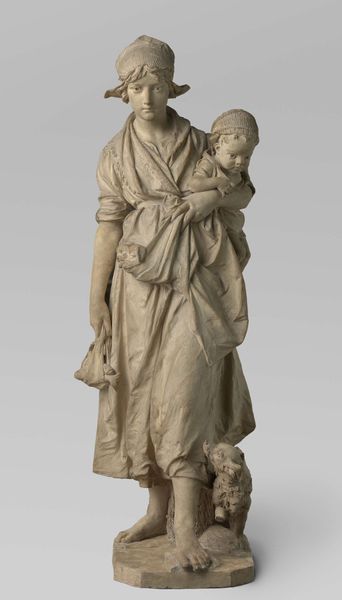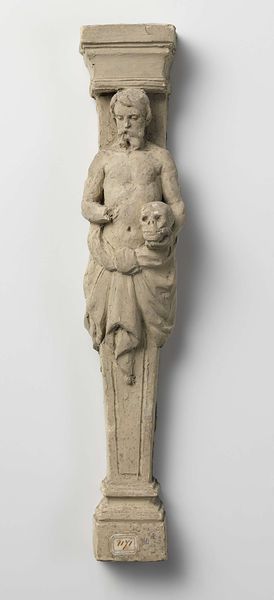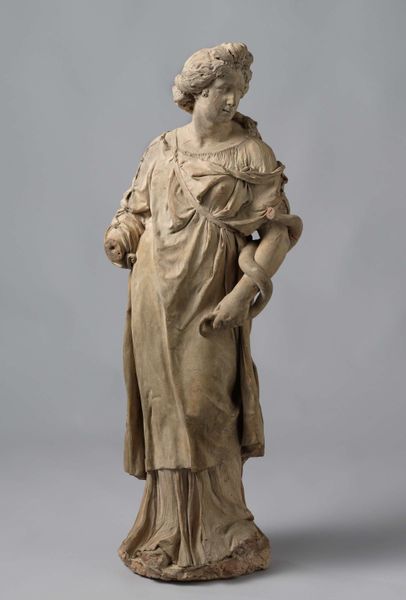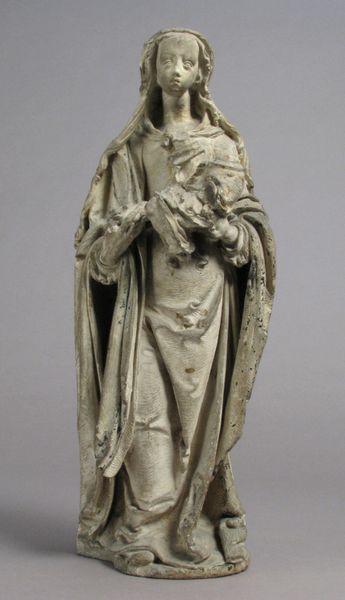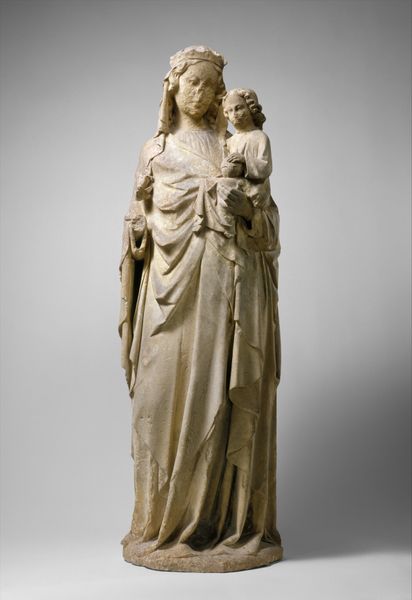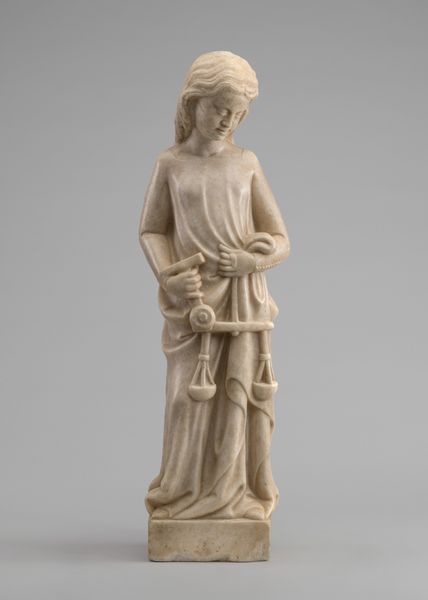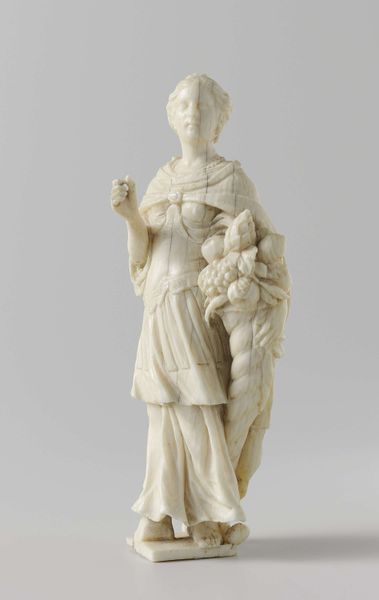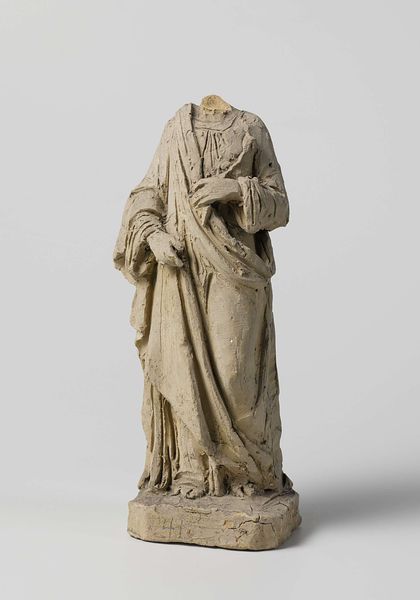
bronze, sculpture, plaster, wood, marble
#
portrait
#
sculpture
#
bronze
#
figuration
#
sculpture
#
plaster
#
wood
#
history-painting
#
academic-art
#
marble
#
realism
#
statue
Dimensions: height 25.5 cm, width 9.5 cm, depth 7.3 cm
Copyright: Rijks Museum: Open Domain
Editor: This is "Edelvrouw" by Eugène Lacomblé, dating from around 1800-1900. It appears to be a plaster sculpture, though I see that bronze and wood are also listed as materials. She seems lost in thought. What do you see in this piece? Curator: This work really exemplifies the fascination with historical figuration prevalent in 19th-century art, especially within academic circles. The detailed costume suggests an attempt at historical accuracy, perhaps inspired by a romanticized vision of the past. The fact that plaster was potentially used as a material speaks to the democratization of art during this time; sculpture was no longer exclusively the domain of marble or bronze. Editor: So the choice of material democratized the work in some way. Why do you say that? Curator: Exactly! Plaster allowed for easier reproduction and wider accessibility, influencing its reception among different social classes. Does her downcast gaze make you wonder about her position in society? What stories might such artworks have circulated about women and power? Editor: Yes, the slight bowing of her head suggests both humility and perhaps pensiveness, fitting with your view of the artist as seeing her within the academic setting and her role in the broader population. I am surprised at the various possible narratives that a sculpture could offer through choice of both the form and the materials selected! Curator: Right! We need to understand how pieces such as these reinforced or challenged contemporary societal norms around history, class, and gender roles. The politics of imagery are very present here. I now look at the work completely differently, especially the cultural context in the sculpture’s democratization process via plaster and how society can be viewed based on her slightly bowed head. Editor: Indeed, it has certainly changed the way I consider her role. Thank you for your insightful interpretation.
Comments
No comments
Be the first to comment and join the conversation on the ultimate creative platform.
